|
The akhlut, in Inuit legend, is an orca-like creature which can turn into a wolf on land, or a giant wolf, or a hybrid of wolf and orca (with many modern artists taking a crack at visualizing it - see examples here). As pack animals and dangerous hunters, orcas and wolves do have a lot in common. Some users on Wikipedia and the Offbeat Folklore Wiki have done excellent digging to establish that the "akhlut" is a very modernized take on a belief.
Akhlut is actually a misnomer; "akh'lut" is the name for the orca among some indigenous peoples around the Bering Sea. (Compare the differently Romanized Yupik word "arrlug," found in Freelang's online dictionary). In 1899, Edward William Nelson, an American naturalist, published his studies collected from the west coast of Alaska and east coast of Siberia. The geographical area encompasses Inuit and Siberian Yupik groups. Among other mythical creatures, Nelson mentioned a shapeshifting monster known as the “kăk-whăn’-û-ghăt kǐg-û-lu’-nǐk": "It is described as being similar in form to the killer whale and is credited with the power of changing at will to a wolf; after roaming about over the land it may return to the sea and again become a whale. While in the wolf form it is known by the above name, and the Eskimo say they know that this change takes place as they have seen wolf tracks leading to the edge of the sea ice and ending at the water, or beginning at the edge of the water and leading to the shore. ... These animals are said to be very fierce and to kill men ... This belief is prevalent among all the Eskimo along the shore of Bering sea." (Nelson, p. 444) "Kǐg-û-lu’-nǐk" means the gray wolf (Nelson, p. 322). Nelson included rationalizations, saying that the killer whale is the clear inspiration and that the vanishing wolf tracks are caused by ice breaking off the shore. He also mentioned other mythical creatures such as white whales (belugas) that also take reindeer form. He included photographs of indigenous art where wolves transform into orcas, or creatures that have aspects of both animals. After Nelson’s work, the idea of this creature has been simplified and passed around. It was described under the name "akhlut" in Gill and Sullivan's Dictionary of Native American Mythology (1992, p. 8). The dictionary cites Tennant and Bitar's Yupik Lore: Oral Traditions of an Eskimo People (1981), but I think this was a mixup. A) Tennant and Bitar don't mention any myths about orcas, and B) Gill and Sullivan's description is very similar to Nelson's in details and wording. Gill and Sullivan were cited by Carol Rose in her reference book Giants, monsters, and dragons: an encyclopedia of folklore, legend, and myth (2001, p. 10). So the akhlut story spread like many similar factoids, through reference books repeating each other. These stories usually focus on the evil of the akhlut; as Carol Rose wrote, extrapolating wildly, "this being emerges from the ice-floes to hunt for human beings in the guise of an enormous wolf. The Inuit, upon seeing huge wolf tracks that terminate at the edge of the ice, know that they are in peril and are quick to retreat. They recognize this spot as dangerous territory, for it is the place where an Akhlut has changed back into this killer whale form and may reemerge to kill them" (Rose, pp. 10-11). One story floating around on the Internet snagged my attention: a supposed origin myth for the akhlut. In this account, there was once a man so fascinated by the ocean that he began to spend all of his time there, and slowly to become more and more like an animal, until his own tribe didn’t recognize him and cast him out. Deadset on revenge, he transformed into a beastly wolf. However, his love for the ocean still tugged at him, so he became an orca. Since then, the creature known as the akhlut spends time in the ocean as an orca but comes ashore as a wolf when hungry (whether for food or for revenge - it varies between tellings). This account has been circulating around a few blogs and forums, and even made it into a book in 2023 (Natalie Sanders' The Last Sunset in the West), but something about it seemed off. After some digging, I discovered that this origin story was attached to the virtual pet site Magistream, which includes numerous mythical creatures. A user first requested that the akhlut be added to the bestiary in March 2010 (source). In December 2011, the akhlut was added, along with an origin story (source). This telling explains more of the internal logic. The man fated to become the first akhlut doesn’t just wander off to become a wolf (although that is not outside the bounds of possibility in folktales). Instead, he is killed by wolves, and his restless spirit shifts between shapes as it is “torn between his love for the water and a consuming need for revenge.” Note that the Inuit people are never mentioned; the story is instead set in a fictional land called Arkene. I tried reaching out to the Magistream moderators for more info, but it seems that the writer who created the Akhlut’s description has moved on from the site since 2010. A close rewording of this story was added to the Cryptid Wiki on August 10, 2015. This version is less descriptive, garbles some of the details, and attributes the story to Inuit legend, apparently for the first time. The Cryptid Wiki's retelling seems to be the most widespread version, copied on various blogs. The Whale-Wolf The myth that Nelson collected fits into a much broader context. Many indigenous peoples had deep respect for the orca, which was associated in some cultures with hunting or with the afterlife. In many cultures, there was a belief that the killer whale and the wolf were the same being. Much like the images collected by Nelson, these were depicted with aspects of both animals in ritual art. The Siberian Yupik believed that the killer whales became wolves during the winter. Unlike what we've seen of the "akhlut" so far, they were revered and seen as helpers. As Edward J. Vajda wrote: "The killer whale... and wolf were considered sacred and could not be killed... Killer whales were also revered as protectors of hunters; it was also thought that the killer whale became a wolf in winter and devoured the reindeer unless some of the reindeer submitted to the hunters. Ritual meals were concluded by throwing a piece of meat into the sea to bless and thank the killer whales who had made the catch possible." The Kwakwaka'wakw of British Columbia also believed that killer whales could transform into wolves (or humans) at will (Francis and Hewlett, p. 117). They made offerings to the orcas to request food such as seals, and believed that orcas/wolves could bestow supernatural powers such as healing (McMillan, p. 322). Similarly, the Nuu-chah-nulth viewed the whale-wolf as benevolent and helpful, with both wolves and whales being patrons of hunting. People avoided killing orcas. As an early-20th-century informant stated, "The killer whales are wolves. Wolves sometimes run through caves into the water and turn into killer whales. The tail turns into the big fin on the back." The wolf-orca connection plays a part in several origin myths for the tlukwana or "Wolf Dance," an important traditional mid-winter ceremony. Relevant to the "origin myth" for the "akhlut," one story describes a young man who is adopted by the wolves and taught to hunt marine mammals. He returns to his village in “Killer Whale clothes” to teach his people the tlukwana (McMillan, pp. 314-316). In Haida lore from British Columbia, a mythical creature called the Wasco could transform from an orca to (depending on the version) either a wolf or a bear. It hunted whales. (Barbeau, p. 305; Deans, p. 58). There is a story where a man killed the Wasco, skinned it, and was able to gain its power by wearing the skin. The kăk-whăn’-û-ghăt kǐg-û-lu’-nǐk - or its modernized counterpart, the akhlut - is part of a mythical context in which people and animals change their shapes at will. As part of this, there is often a connection specifically between orcas and wolves which we find in indigenous myths from all around that geographic area. Nelson gives only a tiny bit of information, and it's hard to say how much might be influenced by his retelling and interest in rationalizing. For another instance of aquatic mammals, there are reports of stories from Nunivak Island that belugas could transform into wolves or mountain sheep (Hill, p. 53). REFERENCES
0 Comments
I first saw the news about this book being published a while ago and knew I had to pick it up. Issunboshi by Ryan Lang is an “epic graphic novel retelling” of the Japanese fairytale of Issunboshi, one of the most famous versions of ATU type 700. The publishing and printing were funded through Kickstarter. It took a while to get my hands on a copy, but here we are!
This retelling gives Issunboshi a more elaborate backstory. The gods used the Ame No Nuhoko, the Heavenly Spear, in the creation of the world. Afterwards, the spear was broken into four parts: the shaft, mount, blade, and spirit. One day an oni came across a piece of the spear. Gaining its power, he began collecting the other pieces and gathering a demon army with the goal of conquering the entire world. The spirit of the spear, searching for a way to stop things, found a childless couple who wished for a son even if he was only as tall as a thumb. The spirit took physical form as the tiny son they wished for, and they named him Issunboshi. The story proper starts with Issunboshi, now a young man six inches tall, living with his parents in their village. Although tiny, he’s stronger than most ordinary humans, and segues between riding on a pet owl or toting heavy buckets around. The story sets up Issunboshi’s feelings of inadequacy (he is approximately as tall as a toothbrush, after all) and his parents’ steady encouragement that he can be great. Then Issunboshi is kidnapped by a tengu or crow demon. Finding himself in the monster-haunted wilderness with only his old needle-sword for protection, he is rescued by a group of warriors who fight monsters and are preparing for a war against the Oni. Issunboshi’s new mentor tells him of his true past and begins training him for an epic confrontation. Issunboshi, small as he is, is the only one who can stop the oni from bringing on an apocalypse. This was a quick read with a simple, straightforward story. There are no big surprises from the plot, and characters don’t get a ton of depth or development. It’s tropey, or archetypal, or whatever you want to call it. There was some comic relief, but the jokes didn’t really land much. I did have a minor quibble with the theme. The book’s message, stated very clearly several times, is that even someone small can do great things (like save the world, fight a giant monster in a hand-to-hand battle, etc.). Although Issunboshi is small, he has near-godlike powers. His mentor tells him immediately that he’s the key to defeating the oni. Training montages and a stumble on the journey help offset this, but still feel quick or even rushed (a larger issue with the middle of the story, between a good beginning and ending). The message comes across okay, but it might have hit harder if Issunboshi wasn’t the amazingly strong incarnation of an all-powerful weapon, but just… a little guy. Ryan Lang is an animator and visual development artist who's worked at Disney and Dreamworks, and you can see that style strongly in his art here. Although everything is in grayscale, the characters are all very vibrant and expressive with unique designs. It also feels very cinematic, and the panels and word bubbles aren't always very dynamic, leaving the effect of storyboards or screenshots from an animated film. However, it is very pretty. There are lots of full-page splashes and spreads, showing off beautiful art. The book is advertised as epic, and it definitely pulls that off. The fairytale of Issun-boshi stands out among thumbling stories; it’s a coming-of-age tale, where Issun-boshi moves out of his parents’ home, finds a wife, and literally and metaphorically grows up—unlike most Western thumbling narratives, where the hero remains a child. I would say that Issun-boshi is, narratively speaking, one of the strongest and most compelling examples of ATU 700. Lang's graphic novel keeps the coming-of-age theme, but is focused on Issun-boshi’s clash with the oni. Instead of a chance encounter near the end of the story, this is a battle Issunboshi was always destined for. The book includes some pieces of concept art at the end, including one that looks like early drafts might have skewed closer to the original fairytale, with Issunboshi meeting a young noblewoman. There’s no romance or equivalent to that character in this retelling. Another big difference is replacing the magic hammer (uchide no kozuchi) of the fairy tale with the spear from an unrelated Shinto creation myth. There are echoes of some typical thumbling motifs, such as when Issunboshi is carried off by a bird or rides on a horse’s head. Overall, it was great to see a new adaptation of one of my favorite thumbling stories. While the story could be stronger, it’s still enjoyable and the art is fantastic. Definitely worth checking out. Further reading
The story of "The Golden Mermaid" begins with a tree that bears golden apples. This tree grows in the garden of a King who looks forward to the harvest, but the apples begins to go missing just as they ripen. The King, in desperation, orders his two oldest sons to go out and search the world until they find the thief. His third and youngest son begs to be allowed to go too. The King tries to dissuade him, but the prince begs so much that the King relents and sends him off—although with only a lame old horse. On his way through the woods, the prince meets a starved-looking wolf and offers him his horse to eat. The wolf takes him up on the offer, and the prince then asks the wolf to carry him on his back since his horse is gone.
The wolf is actually a powerful, shapeshifting wizard and happens to know who the apple thief is: a golden bird that is the pet of a neighboring emperor and apparently really likes to escape and steal golden apples. He instructs the prince on how to sneak into the palace and steal the bird. However, the prince clumsily slips up and is caught and thrown into the dungeon. The wolf transforms into a king and goes to visit the emperor. He gets the conversation around to the imprisoned prince-thief and tells the emperor that hanging is too good for such a scoundrel; instead he should be sent off on an impossible task to steal a golden horse from the emperor in the next kingdom. At this point, things turn into a chain of fetch quests. The prince sets out weeping bitterly at his misfortune, only to run into the wolf, who encourages him to go in and steal the horse. Everything will be fine! Everything is not fine, and the prince promptly finds himself beaten up and trapped in Emperor #2’s dungeon after getting caught with the golden horse. The wolf wheels out his same trick, and this time the prince is sent off to capture the golden mermaid. The prince reaches the sea, where the wolf helpfully turns into a boat full of silken merchandise to lure the mermaid in. Turns out she doesn’t really mind being captured once she falls in love with the prince. The Emperors, realizing that the prince has obviously had powerful magical help, quickly give up all claim to the golden mermaid, the golden horse, and the golden bird, and the Prince proceeds home with his whole golden entourage. On their way home, the wolf bids the prince farewell. However, the Prince's two older brothers have heard of his success and are bitterly jealous. They ambush and murder their younger brother, and steal the golden horse and bird; however, the brokenhearted mermaid won't go with them and stays weeping over the Prince's dead body. An unspecified amount of time passes, with the mermaid still weeping over the corpse, before the wolf shows up and tells her to cover the body with leaves and flowers. The wolf breathes over the makeshift grave and restores the prince to life. The three return home, the wicked older brothers are banished, and the prince and the golden mermaid get married. “The Golden Mermaid” is a typical example of the ATU tale type 550, “Bird, Horse and Princess.” Another famous example is the Russian story “Tsarevitch Ivan, the Firebird and the Gray Wolf.” Tales of other types can overlap; there’s ATU 301, known as “The Three Stolen Princesses,” and there are swan maiden-esque tales where the golden bird and the maiden are the same entity, as in “The Nine Peahens and the Golden Apples” (from Serbia). The prince is the typical fairy-tale Fool: kind of dumb, but kind-hearted and lucky. We also have the memorable and mysterious wolf magician (helpers in other versions can be foxes, bears or snakes, or sometimes humans under a curse). He's a bit manipulative, but still coaching the clueless prince towards his ultimate success. This character does all the heavy lifting. Shapeshifting into people or inanimate objects? Raising the dead? He’s got it covered. The titular mermaid is probably the most striking thing about this story, but she’s not exactly what modern Western audiences would imagine. She evidently has two legs - see the illustration at the top of this post. This is not so surprising as it might seem; our modern idea of the mermaid with a fish-tail is the result of many years of simplifying and syncretizing and Westernizing. For many cultures around the world, the concept of merpeople - literally, sea-people - could encompass various types of entities and even overlap. And many of those entities would have simply had legs and looked a lot like humans. Think of Greek sea nymphs, the Lady of the Lake and other fairies in Arthurian lore, the Irish tale of the Lady of Gollerus, or "Jullanar of the Sea” in the Thousand and One Nights. Any of these sea people lived in some kind of water realm and could be read as a type of mermaid, yet they don't necessarily have fish tails. This is not the only variant of ATU 550 to include a mermaid; a variant from Slovenia, “Zlata tica” [Golden Bird] features a similar mermaid ("morska deklica") and the trick of catching her attention by selling fine fabric (Janezic, p. 266). The Golden Mermaid has some siren-like attributes, singing and trying to beckon the prince into the water, but fits a lot of feminine stereotypes such as being easily lured with pretty fabric. Still, bear in mind that she's stronger than she might seem to modern readers. In many versions of ATU 550, the heroines are easily carried off by the evil brothers. They continue to weep and can't be comforted, resisting in their own way, but they are as easily stolen as the horse and bird. The golden mermaid is unusual in that she manages to stay with the dead prince and watch over his body. We don't hear how exactly she pulls this off, but she withstands two murderers to do so, something that shouldn't be written off. You may have noticed that in all this, I haven't explained where the story is from. The story appeared in Andrew Lang’s The Green Fairy Book (1892), its most famous and widespread appearance. The Coloured Fairy Book series was published under Andrew Lang's name, but the real minds at work were his wife Nora and a team of mostly female writers and translators. In The Lilac Fairy Book, one of the last few in the long series, Andrew wrote in a preface: "The fairy books have been almost wholly the work of Mrs. Lang, who has translated and adapted them from the French, German, Portuguese, Italian, Spanish, Catalan, and other languages." The problem is that, as sprawling and influential as these books are, the citations are frequently awful. Many sources are cut short or just plain missing. Remember “Hans the Mermaid’s Son,” simply noted as “From the Danish.” And “Prunella,” due to the title change and lack of any source, is cut off from its Italian roots. I had to go hunting to find these stories elsewhere. For “The Golden Mermaid,” there is a single terse editor's note: "Grimm." But "The Golden Mermaid" isn't in the Grimms' collections. This may be one of the worst errors ever in the Colored Fairy Books. It looks like the editor mixed up “The Golden Mermaid” with the Grimms’ “The Golden Bird,” a different version of ATU 550. In “The Golden Bird,” the hero is not a prince but a gardener's son, although he does win the kingdom by the end. He’s a little feistier than The Golden Mermaid’s weepy prince, although still hapless (instead of getting caught through clumsiness or happenstance, he’s tripped up by greed or by being too sympathetic to his enemies). The love interest is not a golden mermaid, but the princess of a golden castle, and the wolf-wizard’s role is filled by a talking fox who is secretly the princess’s long-lost brother under a curse. Some scholars don't catch this and refer to the Grimms' Golden Mermaid anyway. The Penguin Book of Mermaids, published in 2019, notes the misleading source with some consternation and even suggests that Lang wrote “The Golden Mermaid" as a very loose adaptation of "The Golden Bird," placing the story with other literary fairy tales. But “The Golden Mermaid” is actually a folktale. I was lucky to stumble across the real source through a tiny note buried in Wikipedia. It's from Wallachia, a historical region of Romania, and was first published in Walachische Maehrchen (1845) by the German brothers Arthur and Albert Schott with the title "das goldene meermädchen" (p. 253). In Romanian, the title translates to “Fata-de-aur-a-mării"; I'm not sure whether this is a back-formation by later scholars, or if the story has been collected in the original language. Arthur collected these stories during a six-year residency in Banat, and considered “The Golden Mermaid” not only the most beautiful story in the collection, but superior to the German “The Golden Bird.” It’s funny reading both of these stories together, because they occasionally seem to fill in gaps of logic for each other, or you can see spots where a story started to stray from the standard plotline. “The Golden Bird” has a few odd fragments, like a random fourth quest tacked on (moving a mountain in order to win the princess). Overall, "The Golden Mermaid" has some interesting themes and characters to unpack, and I especially enjoyed seeing a mermaid in a tale type where they don't often appear. References
Further reading: other fairytales left without sources by Lang Hi everyone! I'm delighted to announce that my first academic article has been published in Shima Journal. It explores the history of Starbucks' iconic mermaid logo and why Melusine, a serpent-woman from medieval myth, has been identified in recent years with images of double-tailed mermaids. You can read it at 10.21463/shima.190
Emily Wilde's Encyclopaedia of Faeries, by Heather Fawcett, is a recently published fantasy romance which plays with many fairy and folktale tropes. The main character is a socially awkward Cambridge professor and "dryadologist" - in this world, faeries are real and well-known, with a thriving field of study surrounding them. Written in diary format, it follows Emily's field research in the remote northern village of Hrafnsvik, where she intends to make her name with an groundbreaking study of some little-known fairy folk. Things soon get complicated as she deals with dangerous fae curses, the local humans, and a handsome academic rival.
The book gets off to a slow start, but once it got going, I enjoyed it a lot. The interplay between Emily and Bambleby is hilarious and eventually turns into a compelling romance. I loved how authentic the rich, dark “fairy tale” mood felt. While original with its own interpretations of folklore creatures, the story feels based in a well-rounded understanding of folklore. For instance, Fawcett infuses a changeling story with more plot significance, elaborating on why the faerie child was left. Emily Wilde's world isn't just a mix of mythical creatures running around, but an element of fairy tale. There are familiar themes and motifs, and this is something acknowledged in the story; Emily holds an unorthodox belief that faeries and the events around them follow the rules and logic of stories in a way that’s alien to humans. There’s also a sense of fairies being inherently local to specific countries and climates. This folkloresque tone is one that I don't always find in modern fantasy; Holly Black's fairy books tend to capture it well. I was amused by the book's scholars and researchers of Faerie, with Emily’s frequent footnotes giving hints into their academic papers, conferences, and drama. In this world, fairies are all real, so there is a whole branch of science blending naturalists with folklorists. I was reminded strongly of rivalries and controversial theories in the real-world folklore field. The dashing, flamboyant Wendell Bambleby has gotten into trouble for falsifying data in his studies - something not too far off from reality in some cases. One thing that stands out to me is how the characters classify creatures under specific names, such as “brownie” for helpful house spirits and “kelpie” for water horses. This is a real approach among folklorists and it has flaws, since these words are rooted in specific traditions and were never meant to be used as generic labels. This is not a big deal in fiction and I’ve used words in this way myself, but it bears mentioning. If you liked Holly Black's Folk of the Air and Spiderwick Chronicles series, or Naomi Novik's Spinning Silver, then this is one to check out. In my list of favorite mermaid books I mentioned A Comb of Wishes, a children's novel released in 2022. I was struck by the many less-popular mermaid motifs that the author, Lisa Stringfellow, wove into the story. There is one story in particular that the plot is built around. As Stringfellow explained, “I wanted my main character to have that trope of making a wish on a mermaid's comb.”
The book revolves around a young girl who finds a mermaid's comb and has the chance to make a wish, but discovers that there is a steep price and mermaids are dangerous, vengeful creatures. Around pages 37-39, she hears the story setting up the background: "The seafolk have been round long before these islands were settled. Coming up out of the water at night, they sit on the rocks and twist their thick hair. Then, they tuck in their combs… One time, an old fisherman came upon a sea woman sitting on a rock in the moonlight. Quick as a flash, she jumped back into the water. But she dropped her comb and the old man picked it up, because he knew it held powerful magic… The old man called out to the sea woman, ‘Mami Wata! Mami Wata!’ And up she come… When the old man showed the sea woman her comb, she asked, ‘What you want from me?’ He said, ‘My wife is sick. I want the power to make her well.’ The sea woman nodded and said, ‘Rake me comb across the water. Then, you throw it back to me. You will have what you want.’ The old man walked into the sea and raked that comb across the water… When he threw it back, the sea woman sank beneath the waves and disappeared. He thought for sure that he had been taken for a fool… But lo and behold!... The old man woke up the next day with his brain full! He knew all types of herbs and healing spells and he was able to make his wife well.” This story has its spark of inspiration in a well-known Cornish tale. "The Old Man of Cury" appeared in Robert Hunt's Popular Romances of the West of England (1865). An old man finds a mermaid trapped in a tidepool, having been distracted by admiring her reflection until the tie went out. She begs him for help and promises him three wishes, so he carries her on his back to the water. He wishes not for wealth, but for the ability to help people by breaking witches' spells, charming away diseases, and the ability to locate stolen goods so he can return them. She agrees and leaves him her comb; from then on, whenever he wants to see her, he can come to the shore and rake it through the water to summon her and she'll teach him the magic and charms he requested. She even offers to take him to her watery realm and make him young again, but he prefers to remain on land. He passes on his magical knowledge to his descendants. A darker and more elaborate version of the story featured in William Bottrell's Traditions and Hearthside Stories of West Cornwall (1870). Bottrell was Hunt's contemporary and one of his most prolific contributors for Popular Romances, but wrote with a much different style, emulating the drolls or storytellers of Cornwall. Bottrell himself was a droll, and his stories are much longer and more detailed. Quite a few stories appear in both Hunt and Bottrell. Bottrell begins the story of "The Mermaid and the Man of Cury" by introducing the storyteller, Uncle Anthony James. Bottrell explains that this was a favorite story and it was often altered "by adding to the story whatever struck his fancy at the moment." Bottrell's version has a similar start as Hunt's, and takes place at the same location. The old man is introduced as Lutey, a fisherman and smuggler. Walking on the shore one day, he hears a woman crying out for help, and discovers a mermaid trapped in a tidepool. Her name is Morvena, or sea-woman. She gives him her comb, which has the power to summon her, and begs him to take her to the sea; she needs to get home, since her abusive mer-husband may eat their children. As he carries her in his arms towards the water, she offers him three wishes. She is pleased by his unselfishness when, rather than requesting money, he asks instead for the ability to help others by breaking witches' spells, commanding spirits, and for these gifts to continue in his family. The mermaid gets flirty and entices him to come down into the ocean with her. He is almost under her siren-like spell when the sound of his dog barking distracts him, and he's able to break free. The mermaid swims away, while promising him that she will return in nine years. Returning home, Lutey discovers that he now has the abilities of healing and wisdom he asked for. Nine years later, while Lutey is fishing with a friend, Morvena returns. Lutey, accepting his fate, goes with her and is never seen again. From then on, every ninth year one of his descendants is always lost to the sea. The story had some popularity. A version probably derived from Hunt's appeared in Arthur Hamilton Norway's Highways and Byways in Devon and Cornwall (1898), and a Bottrell-esque version in "The Sea Maid and the Fisherman" showed up in The Dublin University Magazine in 1871. A version titled "Lutey and the Mermaid" appeared in Mabel Quiller Couch's Cornwall's Wonderland. Couch was specifically retelling Cornish folktales that she'd read, in a simpler style more appropriate for children. Although Couch's version is extremely close to Bottrell's to the point of near-identical descriptions, there are a few lines that make me think she also drew on Hunt. (Hunt: "He thought the girl would drown herself . . . He looked into the water, and, sure enough, he could make out the head and shoulders of a woman, and long hair floating like fine sea-weeds all over the pond, hiding what appeared to him to be a fish's tail." And Couch: "At first Lutey thought she had drowned herself, but when he looked closely into the pool, and contrived to peer through the cloud of hair which floated like fine seaweed all over the top of it, he managed to distinguish a woman's head and shoulders underneath, and looking closer he saw, he was sure, a fish's tail!") In Hunt's version, there's a logic to the mermaid's comb that isn't quite as apparent in Bottrell's version. Hunt's fisherman uses the comb in the act of fulfilling his wish and keeps it as proof. In Bottrell's version, the comb is shown as proof after the encounter but otherwise isn't all that important. It's not clear if Lutey ever uses it to see the mermaid. But all of this is very interwoven. Bottrell may have been the one who gave Hunt “The Old Man of Cury.” Not only do both of their collections feature the story type, but Bottrell notes that he heard many versions of the story from Uncle Anthony. Hunt, in his collection, quotes a letter about Uncle Anthony which may have been from Bottrell. The differences are easily explained by Bottrell’s mention of the way the story changed from telling to telling. (Incidentally, Hunt’s other major contributor was Thomas Quiller-Couch - Mabel Quiller-Couch’s father.) Stringfellow’s reimagining keeps the basics and the ominous sense surrounding mermaids, while weaving it with Caribbean folklore to make a new story. She makes the comb a main focus. The fisherman doesn't just want to help people in general, but has a specific goal of healing his wife - paralleling the main plot, where the protagonist Kela is trying to get her dead mother back. Bibliography
Over the past year or so, I’ve been on the hunt for mermaid fiction. I’ve been through a lot of lists, and here's my own list of some favorites so far. There are many, many, MANY books on mermaids out there. The books here are ones that particularly stood out as both enjoyable and memorable for me this year. Brine and Bone by Kate Stradling (2018): a retelling of The Little Mermaid. Stradling does something I've seen in a few other places by telling the story from the perspective of the other maiden - the human girl who steals the prince's heart. In this version, Magdalena is the prince's childhood friend and the girl he always really loved. What this book does a little differently is that it treats mermaids as fae. This connection often gets lost in modern fiction, but old stories of mermaids and fairies really do overlap a lot. The "little mermaid" is eerie and alien, and the human characters are rightfully fearful of her. But Magdalena surprisingly finds some common ground with the mermaid. My only complaint is that it's pretty short and and I would have liked to see it go even more in depth. Mermaid’s Song by Alida van Gores (1989): In an underwater society torn between two races, the mogs and the oppressed merra, a merra-maid named Elan learns to use her magic and competes for the coveted post of guardian to the Sea-Dragons. The competition will decide the fate of the entire ocean. If you want to read an adult fantasy with a committed treatment of an underwater mermaid world, this is for you. Magic is kept fairly low-key, so the oceanic society feels refreshingly practical, with little details reinforcing that this is not our world - for instance, nobody sleeps in beds, and instead they essentially tie themselves to things. The entire story takes place underwater, which is surprisingly rare for a mermaid book! That said, there were a few uncomfortable themes that kept me from completely enjoying it. For instance, rather than the characters fighting for true equality, the merra are the rightful ruling class and the mogs need to get back to being subservient laborers. All the Murmuring Bones by A. G. Slatter (2021): Mirin O’Malley is one of the last descendants of a formerly prosperous family, whose wealth came from regular human sacrifices to the merfolk. When Mirin’s grandmother plots to marry her off to her creepy cousin and start up the sacrifices again, she runs away to search for her missing parents. Mermaids, rusalki, selkies and other mythical water creatures are more of a backdrop here, ominous figures who haunt Mirin. However, the main plot is interspersed with short, folktale-esque stories that I really enjoyed. I also liked the themes of healing and making amends, and was thoroughly rooting for Mirin by the end. Into the Drowning Deep by Mira Grant (2017): A marine research ship heads out into the ocean to investigate a mysterious disaster and prove whether or not it was caused by mermaids, as rumor has claimed. Turns out the mermaids are all too real - and the research expedition is about to turn into a bloodbath. Despite an underwhelming ending, this B-movie horror in book form is compulsively readable. I just really loved the plot of scientists discovering mermaids. Grant’s faux-scientific patter about mermaids with mimicking abilities and bioluminescent tentacle-hair feels believable, at least to me as someone who knows nothing about marine biology. If that sounds like something you'd enjoy, then this and its prequel, Rolling in the Deep, are both worth a read. The Moon and the Sun by Vonda McIntyre (1997): A dark, dense, intricate historical fantasy where a captured mermaid is brought to the court of the Sun King, Louis XIV. (The mermaids or sea people here have two leg-like tails.) Naive young noblewoman Marie-Josephe learns to understand the "sea monster's" musical speech, sparking an ethical dilemma and a mission to free the imprisoned sea woman. The novel is very much about personhood, touching on misogyny, slavery and treatment of people with disabilities, extending through the image of the sea woman whom authorities are ready to discount as a mindless animal that can be killed and eaten. There’s some good “mermaid” worldbuilding sprinkled in, too; the novel is an expansion of McIntyre's short story, “The Natural History and Extinction of the People of the Sea.” It can be hard to follow at times; there's a huge cast and everyone in the French court has multiple names and titles. (This book got an absolute travesty of a film adaptation, and I’m still mad about it. JUSTICE FOR COUNT LUCIEN!) Emerge by Tobie Easton (2016): Another Little Mermaid retelling - sort of. In this universe, unbeknownst to humans, The Little Mermaid was based on a true story and the heroine’s actions left the undersea world of merfolk in turmoil. In modern times, a mermaid named Lia Nautilus lives in disguise as a human, shielded from the war going on in the deep. When she learns that her human crush is in danger, she turns to forbidden siren magic to save him. This cheesy, fluffy teen romance, the first of a series, was a surprise favorite for me. I was initially put off by the cartoony worldbuilding and puns (in one early eyerolly moment, a hot guy is called a “total foxfish”). But Easton commits to it and clearly put a lot of thought into a world with shapeshifting mermaids, underwater architecture, and magic. Lia’s plight is compelling, and I found myself enjoying the trilogy even more as it went on. A Comb of Wishes by Lisa Stringfellow (2022): Kela, a young girl grieving her mother’s death, finds a mermaid’s comb. The mermaid offers her a wish in exchange for its return, and there’s only one real option for Kela: for her mother to be alive again. But there’s a steep price for wishes, and when the comb is stolen before Kela can return it, things quickly start to go wrong. This middle-grade novel was a joy to read. Stringfellow blends the Caribbean setting with touches of mermaid stories from around the world (from "The Little Mermaid" to "The Old Man of Cury" and "The Soul Cages"). Mermaids are more of a mystical force here than in most of the other books on this list, but this book is firing on all cylinders with lyrical writing and a compelling, emotional plot. Some of these books I honestly didn't expect to like so much - I originally ignored Emerge because of the punniness, A Comb of Wishes because it was a kids' book, All the Murmuring Bones because it sounded like the mermaids were barely in it. It was exciting to be able to add them to the list. Looking at this list, I realize that most of them are set primarily on land or have human main characters; this is a common theme. Writing an underwater setting can be a challenge because it rules out so much of society and technology that we take for granted.
I'll continue to read mermaid books as I find them - because I like mermaids, but it's also fun to observe the popular image of these beings from folk and fairy tales. The Little Mermaid is a very popular subject for retellings. If you have a favorite mermaid book, drop it in the comments! I’ve always taken an interest in the names given to fairies in folklore and literature. Frequently the most famous fairies are kings and queens, like Oberon, Titania and Mab of Shakespeare. One name that was frequently given to a fairy queen at a certain point, but doesn’t get used as much anymore in pop culture, is Proserpina. The Roman goddess of the Underworld and equivalent of the Greek Persephone was recast as a fairy queen. There's a general trend of gods being downgraded to fairies across history. We see something similar with the goddess Diana’s name attributed in medieval times to pretty much any legend of nightly witch rides. In Dr. Samuel Harsenet's Declaration of egregious Popish Impostures (1603), the god Mercury is "Prince of the Fairies" as well as Jupiter's son. I want to delve into the idea of Proserpina as a fairy.
In Geoffrey Chaucer’s “The Merchant’s Tale” (The Canterbury Tales, dated 1387-1400), Pluto and Proserpine show up as the rulers of the fairies, hanging out in a garden. It's been suggested that these characters set the model for Shakespeare’s Oberon and Titania. In both works, the fairies are deity-like beings who take an interest in human love affairs and may sometimes magically interfere, and there's a focus on a disagreement between the fairy rulers. This might even have been the spark for later writers to use Proserpine as the fairy queen's name (Green p. 202). “Proserpyne” or “Proserpyna” is the benevolent fairy queen who guides the hero of The History of The Valiant Knight Arthur of Little Britain, with English translations dating to the mid-1500s. It originally came from French and goes back even further. In this story, there are actually four fairy queens, and she's their chief. Her role includes fairy godmother, fairy lover, supernatural helper and tutelary spirit motifs; blessing newborns, aiding the hero (flirting with him and then setting him up with her human doppelganger Florence), even pulling some changeling-style antics to take a woman's place (although she does it to help). Fairy queen Proserpina shows up in Thomas Campion’s poem Hark, All You Ladies (1591). Here she is a kind of love- and fertility-related spirit and leader of a troop of fairies who, in classic fashion, pinch people black and blue. And in RIchard Johnson’s The Most Famous History of the Seven Champions of Christendome (1596), Proserpine is a fairy queen who rules in the underworld and whose fairies lead human travelers astray. She also aids in childbirth and foretells children's futures - a very fairy godmother/Greek Fates thing to do. Proserpina did show up in her more goddess-like roles in literature. For instance, in Edmund Spenser's The Faerie Queene (1590-1956), she and Pluto are mentioned in a more negative light as the rulers of Hell and parents of the villainess Lucifera. But it seems like, for a small space here, we have a spate of stories where this Roman goddess simply is the fairy queen (and, with her, Pluto is the fairy king). In many ways this makes sense. Fairies are often tied to death and the afterlife in folk belief, and live in subterranean realms. In many cases, fairies actually are the dead. Proserpine/Persephone does hit on a lot of these trends, plus she's associated with nature and the seasons. But Proserpina was quickly overshadowed by Shakespeare's fairy queens, Titania and Mab. Especially Mab. She absolutely trounced Titania in the popularity department, stealing top billing as empress of all the fairies and also stealing Titania's husband Oberon. This was the time of tiny, comedic fairies being popular. A Midsummer Night's Dream's Titania was a seasonal goddess; Romeo and Juliet's Mab was a comedic mite tailor-made for the fashion of literary fairies. Proserpina, like Titania, just doesn't fit that mold. A more fitting role for her is seen in Michael Drayton’s Nymphidia (1627), where fairy ruler Queen Mab appeals to her as the "Queen of Shades" for witchy magical help. Just as there are many reasons why Proserpina would fit, there are also plenty of reasons this one didn't stick. Proserpina is clearly an outside influence, a famous Roman goddess, a foreign name slapped onto an ostensibly local story of fairies. Even Titania's name originally comes from Ovid's Metamorphoses. Mab, an English nickname, may have felt more natural and local. Or maybe people intentionally wanted to move away from Proserpina's darker associations of death, witchcraft and pagan religion (Nichols 404). Fairies were being sanitized. They were cute and funny. In more heroic, less comedic plays and poems, they were often used as metaphors for the royal family. All in all, it makes sense why this worked out like it did, but I also think Proserpine deserves a little more attention as a somewhat popular fairy queen character. Although her appearances are literary, many of them show hints of contemporary fairy beliefs. Sources
Blog posts There is a problem with sorting folktales. As Christine Goldberg put it: "Folktales present a paradox. Theoretically, tale types should stay separate; in fact, sometimes they do not.”
The Aarne-Thompson-Uther (ATU) Tale Type Index, created to sort fairytales by types, is very useful but is still a numbering system for something that was never meant to be numbered. Oral tales often overlap and blend, and some stories seem to pair together more easily and often. Linda Dégh believed that there might be a common origin for some tales that frequently interwove - she was talking specifically about tale types 403 (The Black and the White Bride), 408 (The Three Oranges), 425 (The Search for the Lost Husband), 706 (The Maiden Without Hands) and 707 (The Three Golden Sons). As she put it, "their variants cross each other constantly and... their blendings are more common than their keeping to their separate type outlines." (emphasis added) I think ATU 709, Snow White, may be a neighboring member of this story family. The origins of Snow White are actually a bit of a stumbling block. There are so many overlaps with other tales. Christine Goldberg again: "Variants of AT 709 incorporate motifs that also appear in other tales: the child taken into the forest, as in “Hansel and Gretel”; the heroine put to sleep by a pin prick, as in “Sleeping Beauty”; the treacherous teacher or the jealous sisters, as in AT 510-511 (“Cinderella”); the house in the woods, as in “The Seven Ravens.” Such admixtures have troubled folklorists since Ernst Boklen’s Sneewittchenstudien (1910, 1915).” (Goldberg 105) Some folklorists seem dismissive towards the Snow White tale, characterizing it as a recent and shoddy patchwork. The collector Joseph Jacobs, also citing Boklen, described it as "obviously a late product combining many motifs from different, more primitive, or at least earlier formulæ." Sigrid Schmidt also leaned towards this amalgam theory and suggested that Snow White is classed under Other Tales of the Supernatural in the ATU index “because it does not fit properly into the Tales of Magic.” (I.e., number 709 is much farther down the ATU list than the fairy tales that seem most similar.) This is a chicken-or-the-egg question for me. Is Snow White a late hodgepodge? Or is it simply closely related to these other tales? One question is a little easier - Sigrid Schmidt's passing mention that Snow White is in a weird spot in the ATU numbering system. In fact, it is located smack in the middle of several similar tales about persecuted maidens. I think this is obscured by the fact that most people judge it by the Brothers Grimm version. I've previously discussed Snow White's similarities and frequent overlaps with ATU 451, "The Brothers Turned into Birds/The Maiden in Search of Her Brothers." The scene of Snow White finding the dwarves’ house is exactly like the girl finding her bird-brothers' house in "The Seven Ravens." “The Twelve Wild Ducks” begins with the same opening as the Grimms’ Snow White. The Snow White-esque story of “Udea and Her Seven Brothers,” which has sometimes been subdivided as ATU 709A, begins with the brothers driven out when their sister is born, as happens in many bird-brother tales. Now I'm going to look at Snow White's similarities to the stories of persecuted maidens, located in the early 700s of the ATU system. These stories are often characterized by the heroine going through two periods of persecution: first in her family home, and later in her husband's home. The Maiden without Hands (ATU 706) Persecution of heroine: A man promises his daughter to the Devil. Or tries to force his daughter to marry him. Essentially, there’s some kind of drama or jealousy. Banishment and disabling: This culminates in the girl being mutilated (in the most famous versions, her hands are cut off) and fleeing into the wilderness. Marriage: A king finds her in the wilderness and marries her. Persecution of heroine and her children: While he is away, she gives birth to a child. However, an enemy (often someone involved in the hand-chopping incident) frames her for murdering her child or giving birth to a monster, and fakes an order of execution from the king. The girl flees into the wilderness with her child, where her mutilation is healed. Reunion: The king finds her and their family is reunited. The Three Golden Children (ATU 707) Marriage: A king marries a girl who has said she will bear beautiful children. Banishment/Persecution of heroine and her children: She gives birth to the promised children - often two or three of them - but her jealous sisters (or rival co-wives?) replace the babies with animals and accuse her of infidelity. The queen is imprisoned or banished. Her children are cast into a river or killed, but either escape death or are resurrected. Reunion: The children return and reveal the truth. Rivals punished, family reunited. Our Lady's Child (ATU 710) Persecution: A girl is adopted by the Virgin Mary (probably a stand-in for a pre-Christian goddess), but disobeys one of her commands. Banishment and disabling: The girl is cast out into the woods and left unable to speak. Marriage: A king finds her in the wilderness and marries her. Persecution of heroine and her children: She gives birth to children, but her godmother takes them away and makes it look like she murdered them. Reunion: When the girl is about to be executed for the murders, the godmother relents and returns her children and power of speech. The family is reunited. (This plotline is extremely similar to ATU 451, “The Brothers Who Were Turned into Birds.” It's just missing the brothers.) Snow White (ATU 709) Persecution: A queen becomes jealous of her stepdaughter and attempts to have her killed. Banishment and disabling: The girl flees into the wilderness. She finds shelter with some friendly men, but her stepmother attacks multiple times and is eventually successful in putting her into an enchanted sleep. Marriage: A prince finds her, awakens her and marries her. Common Themes These stories frequently feature the motif of “The Calumniated Wife,” where a woman is falsely accused and punished. (This also shows up in "The Brothers Turned into Birds," already mentioned as a close neighbor to Snow White.) The villain is often a woman motivated by jealousy: sisters, mothers, stepmothers, mothers-in-law. There are hints here of older stories about polygamy and rival wives. I think polygamy, rather than mother-daughter rivalry, may be the true root of the Snow White tale. Verrier Elwin - who collected numerous Indian examples of ATU 707 with rival wives as the villains - suggested that this story was intended as a moral tale about the dangers of polygamy, and thus didn’t appear in Europe. This ignores that there very much are European stories about polygamy - like the early Snow White tale "Sun, Moon, and Talia," and even some positive portrayals of polygamy in Celtic Snow Whites. Often, the heroine is disabled in some way by the time the king first meets her. The heroine of “The Maiden without Hands” is physically mutilated, but made whole by the conclusion of the story. The heroine of “Our Lady’s Child” - as in “The Brothers Turned into Birds” - becomes unable to verbally communicate, and regains the ability to speak at the climax. Snow White falls into a deathlike sleep and is later awakened. The Grimms’ Snow White story does feature the heroine exiled to the wilderness, but lacks the “Persecution of heroine and her children” segment. However, other versions frequently include it. In "Sun, Moon, and Talia," after the king awakens Talia and brings her and her twin children home, his first wife tries to murder and eat them. The Greek "Maroula and the Mother of Eros" runs through the Snow White plot of jealousy and a sleeping curse, and then the heroine Maroula is framed for the murder of her twins and cast out. However, she meets a monk who restores her children to life, and her husband finds her again. Grimmer versions follow the Calumniated Wife pattern, but lack the resurrection for the heroine's children - such as in "The Magic Mirror," from Romania, and "The Magician's Mirror," from Lesbos. Scottish Gaelic tales frequently show overlap between "Snow White" and "The Girl without Hands," as seen in "Lasair Gheug, the King of Ireland's Daughter." Here, the heroine's mother frames her for murder and forces her to swear an oath of silence, followed by the heroine being cast out and having three fingers chopped off. She gets married and endures a sleeping curse. In the end, she works out a way to tell her story without breaking her oath. The "Calumniated Wife" motif also shows up in Shakespeare's play Cymbeline, which has elements of both "Snow White" and the tale type “The Wager on the Wife’s Chastity.” Princess Imogen is falsely accused of adultery, and her husband tries to have her assassinated. But the killer takes pity on her and helps her flee, after which Imogen takes refuge in the woods and accidentally takes a sleeping potion sent by her wicked stepmother. Charlotte Artese suggests that Shakespeare noticed similarities between “Snow White” and “The Wager on the Wife’s Chastity,” which both include the exile of the persecuted woman, and intentionally combined the two stories in Cymbeline. This is the most likely option, based on what we know about Shakespeare. However, there are some ATU 709 tales where the plot kicks off when the Snow White figures is accused of infidelity - namely Alexander Afanasyev's "The Magic Mirror" from Russia, and "Rumanah," an Egyptian Hebrew tale. And remember the Scottish Gaelic "Lasair Gheug." It’s entirely possible that Shakespeare knew a British version of ATU 709 where the heroine is falsely accused of some crime. That would have been even closer to the Wager stories. Conclusion I leave this post with a few final thoughts. The ATU numbering for Snow White actually makes perfect sense because it is grouped with other tales of persecuted, exiled maidens. This is even clearer when you look at similar tales outside the Brothers Grimm. Studying these tales, it’s impossible not to notice how often Snow White stories intersect with tales of false accusations, forced silences, and lost children - and, eventually, the chance for the heroine to tell her tale and receive justice. There is something interesting in the way that Afanasyev's "The Magic Mirror," "Lasair Gheug," the Italian "The Young Slave," and the Malay "Syair Bidasari" - among others - all reach a resolution when the Snow White-like heroine is able to find a way to tell her story despite the villain’s power over her. Afanasyev's is particularly fun here, with the heroine smacking people with a ladle. Overlapping and merging is what folktales do, and some in particular seem to naturally pair together. Although there are still many questions about its history, I don't see how this indicates that Snow White should be considered a later story. Other Blog Posts Bibliography
Today I want to talk about a little corner of overlapping folktales. These stories follow a young woman who, out of lust or greed or maybe just foolhardiness, is enticed to open a gate and allow enemy forces into her home. Her home is destroyed and she meets an ironic death. Also, there's a connection to myths of mermaids and flooded cities.
A basic traitorous-daughter story, without the floods and mermaids, is the legend of Tarpeia, the daughter of the Roman commander at a time when Rome was under siege by the Sabines. Tarpeia secretly offered the Sabine leader a deal - she'd let his soldiers inside in exchange for what they bore on their left arms. She thought she was making a deal for their precious golden bracelets. However, when she opened the gate and waited eagerly for her reward, the Sabine soldiers instead threw their left-handed shields onto her and she was crushed to death. Arthur A. Wachsler made a connection from this and similar tales to Aarne-Thompson type 313, "The Girl as Helper in the Hero's Flight." In both cases we have a female character who betrays her father for the sake of a male outsider whom she helps on a mission. However, this doesn't quite work. The fairytale - and even mythical parallels such as Medea and Ariadne - are focused on the adventures of the hero, and the girl is at least initially a heroic figure who winds up abandoned and forgotten for her troubles. (The fairytale version gets her man back.) Tarpeia-style tales are harsher parables in which the girl is both villainous and foolish, and promptly gets herself killed. A specific strand of these more moralizing tales include a theme of water and transformation. I have found three examples so far: Scylla of Megara, Dahut, and Lí Ban. Scylla of Megara: from Ovid's Metamorphoses The guarded city: The city of Alcathous, ruled by King Nisus, is under attack by King Minos. However, Nisus has a lock of purple hair that makes him invincible. Opening the gate: Nisus's daughter, Scylla, sees Minos from afar and falls madly in love with him. That night, she sneaks into her father's bedroom and cuts off the purple lock, destroying his gift of invulnerability. She then sneaks out of the city and goes to Minos's war camp, where she presents him with the hair (and maybe even her father's head). Disturbed, Minos immediately leaves in his ship. Immersion and transformation: Scylla leaps into the sea after Minos and tries to climb onto the ship. Her father, who has transformed into an eagle, attacks her. As she falls from the ship, she is transformed into a sea bird or ciris. It's important that Scylla's flight and transformation take place on the sea. Also, although there's no direct connection between the characters, note that the most famous Scylla of classical mythology was a sea monster. Dahut of Ys: from Brittany The guarded city: King Gradlon rules the city of Ys. The city is shielded from floods by a dike, and Gradlon alone holds the key to the sluice gate. Opening the gate: Gradlon’s daughter, Dahut or Ahes, is a wicked, unchaste young woman. One night, while meeting with her lover (who in some versions is the actual Devil), she steals her father's key and opens the sluice gate. Immersion and transformation: Gradlon wakes up to find the city flooding. He and Dahut flee on his horse, but the waves are about to overtake them. Gradlon throws Dahut off his horse, and as soon as she falls into the water, the flood stops. The city of Ys is lost but can sometimes still be seen beneath the waves, and Dahut becomes a Mari-Morgan (Breton for mermaid) and people often hear her singing. (Jean-Michel Le Bot points out that "mari-morgan" is also a term for monkfish (Lophius piscatorius) in some areas of Brittany.) The earliest accounts of Ys do not mention Dahut, whose first known appearance was in 17th-century monk Albert Le Grand's Vies des Saints de la Bretagne Armorique. This first mention is pretty brief, with Dahut dying. Subsequent versions fleshed out more details, and the modern version of the tale is highly literary. Matthieu Boyd has a good rundown of the evolution of the story, including recent retellings which make Dahut a heroic figure. Amy Varin makes a shaky argument that Dahut was originally a sovereign goddess who bestowed kingship on her chosen consort (most of her evidence is unrelated legends of mermaids or otherworldly maidens who married humans). Lí Ban: from Ireland The guarded city: A man named Eochaid comes to a place with a spring well. He builds a house there, and sets a woman to tend the well so it doesn't overflow. Opening the gate: One day, the woman fails to cover the well. Immersion and transformation: This causes a flood which creates the lake known as Lough Neagh, drowning Eochaid and all of his children except for two sons and Lí Ban. Lí Ban survives in her chamber underwater and is transformed into a salmon or, in some versions, a mermaid. Centuries later, she encounters monks and tells them her story. She receives the name Muirghein. The parallels from Lí Ban to Dahut are fainter, but there are indications that these stories share some root. The cognate name Morgan/Muirghein is particularly striking. Amy Varin suggests that - based on the parallels in story structure - Lí Ban herself is the woman who fails to cover the well. Compare another variant of Lough Neagh's origin, recorded by Giraldus Cambrensis in the Topography of Ireland. “Now there was a common proverb . . . in the mouths of the tribe, that whenever the well-spring of that country was left uncovered (for out of reverence shown to it, from a barbarous superstition, the spring was kept covered and sealed), it would immediately overflow and inundate the whole province, drowning and destroying the whole population. It happened, however, on some occasion that a young woman, who had come to the spring to draw water, after filling her pitcher, but before she had closed the well, ran in great haste to her little boy, whom she had heard crying at a spot not far from the spring where she had left him. But the voice of the people is the voice of God; and on her way back she met such a flood of water from the spring that it swept off her and the boy, and the inundation was so violent that they both, and the whole tribe, with their cattle, were drowned in an hour in this partial and local deluge. The waters, having covered the whole surface of that fertile district, were converted into a permanent lake. A not improbable confirmation of this occurrence is found in the fact that the fishermen in that lake see distinctly under the water, in calm weather, ecclesiastical towers . . . and they frequently point them out to strangers travelling through these parts, who wonder what could have caused such a catastrophe.” (Spence, p. 188) This type of flood myth is common and a few Celtic variants stand out as caused by a woman. In a Scottish story, the ancient witch known as the Cailleach had a well in Inverness which needed to be kept covered at night. She tasked her maid, Nessa, with caring for the well. But one evening, Nessa was late to cover it, and by the time she got there, water was flooding from the well. Nessa ran away, but the Cailleach - watching from a mountain - cursed her never to leave the water, and Nessa was transformed into the River Ness (connected to the Loch Ness). Every year on the anniversary, Nessa briefly appears in human form to sing sadly. (There is a similar tale of the River Boyne, where the flood is caused by an "attendant nymph" who foolishly walks withershins three times around the well.) (Hull, 249-250). Sir John Rhys collected some stories of Glasfryn Lake, which he identifies as a Welsh "Undine or Liban story". A woman named Grassi, or Grace, committed the same misstep of leaving a well uncovered and causing a flood. Grassi either became a weeping ghost haunting the field by the newly made lake, or was transformed into a swan by fairies. Rhys also noted that the Glasfryn family had a mermaid on their coat of arms, and theorized that the well maiden was originally named Morgen or Morien, to fit with the Lí Ban model. One of the oldest parallels is the Welsh story of the drowned city Cantre'r Gwaelod, dating to the 13th-century Black Book of Camarthen . . . maybe. The problem here is that the original poem has been translated in many contradictory ways. Some translations place the blame on Mererid, a well maiden who neglected her duties. Other translations state that the culprit was Seithennin, a male drunkard who failed to close the sluices. Or it was both Mererid and Seithennin. Or maybe neither of these are characters in the first place, and we’re looking at generic nouns which have been misread as names. We don't know! (Celtic Review, pp. 338-340) Overall, in general there are two distinct stories.
You might even go back as far as the Assyrian myth of Derceto or Atargatis. In Diodorus Siculus’s rendition of the story, the goddess Derceto offended Aphrodite, who retaliated by making her fall for a certain young man. Derceto had sex with him and gave birth to a child, but was ashamed. To hide what she’d done, she murdered her lover and abandoned the baby. Finally, she flung herself into a lake, where she was transformed into a fish with a human head. It doesn’t map onto the story exactly, but here we do have a woman who falls into lust (like Scylla and Dahut), commits a betrayal, and instead of drowning meets a watery transformation. Dahut is a particularly interesting case. She may not have originally been part of the story of Ys. Was the well maiden motif added later to the story of King Gradlon and his flooded city? And could John Rhys be right that the original name of this figure was something like Morgan, "sea-born"? Sources
|
About
Researching folktales and fairies, with a focus on common tale types. Archives
July 2024
Categories
All
|
Writing in Margins
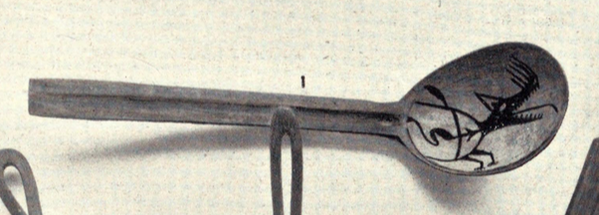
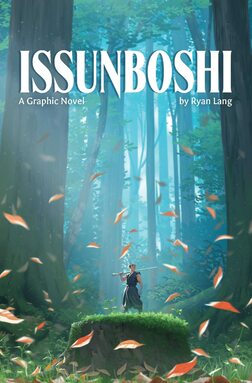
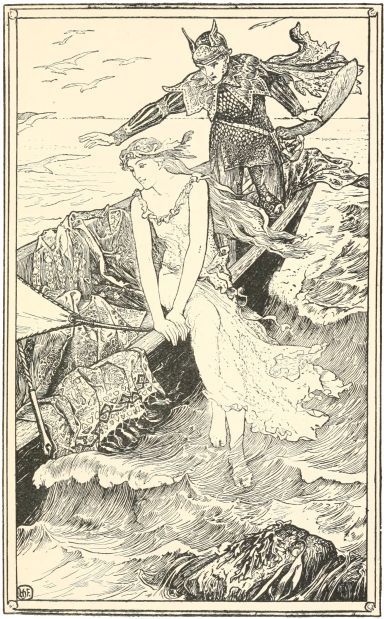
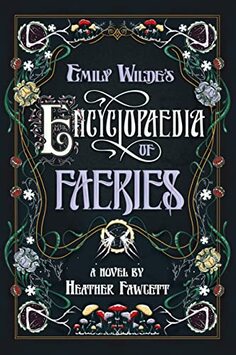
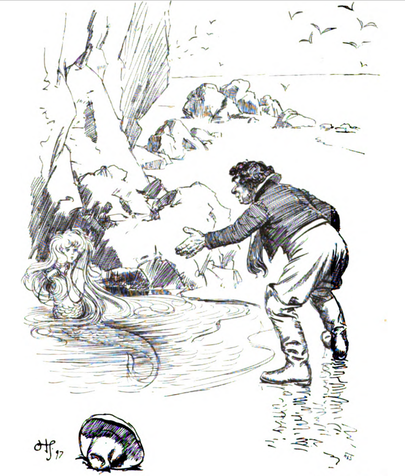
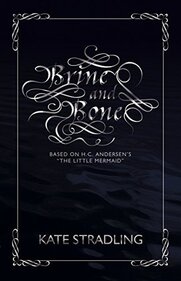
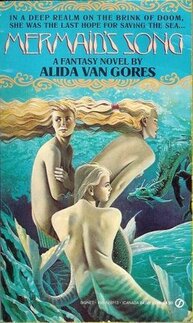
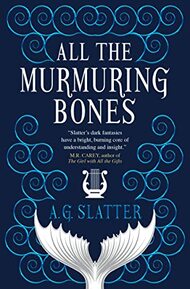
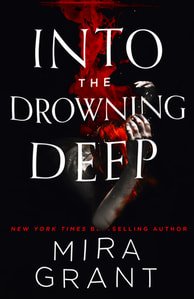
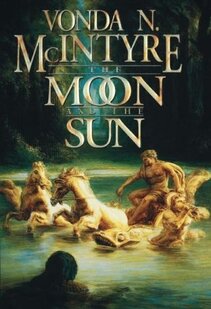

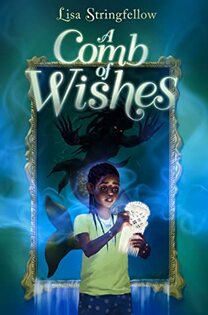
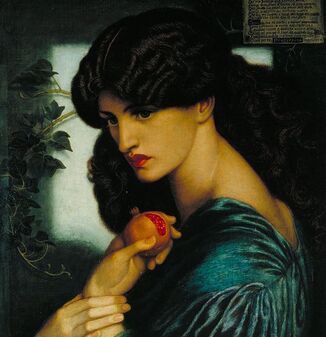

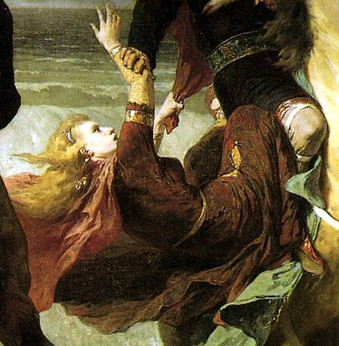
 RSS Feed
RSS Feed
